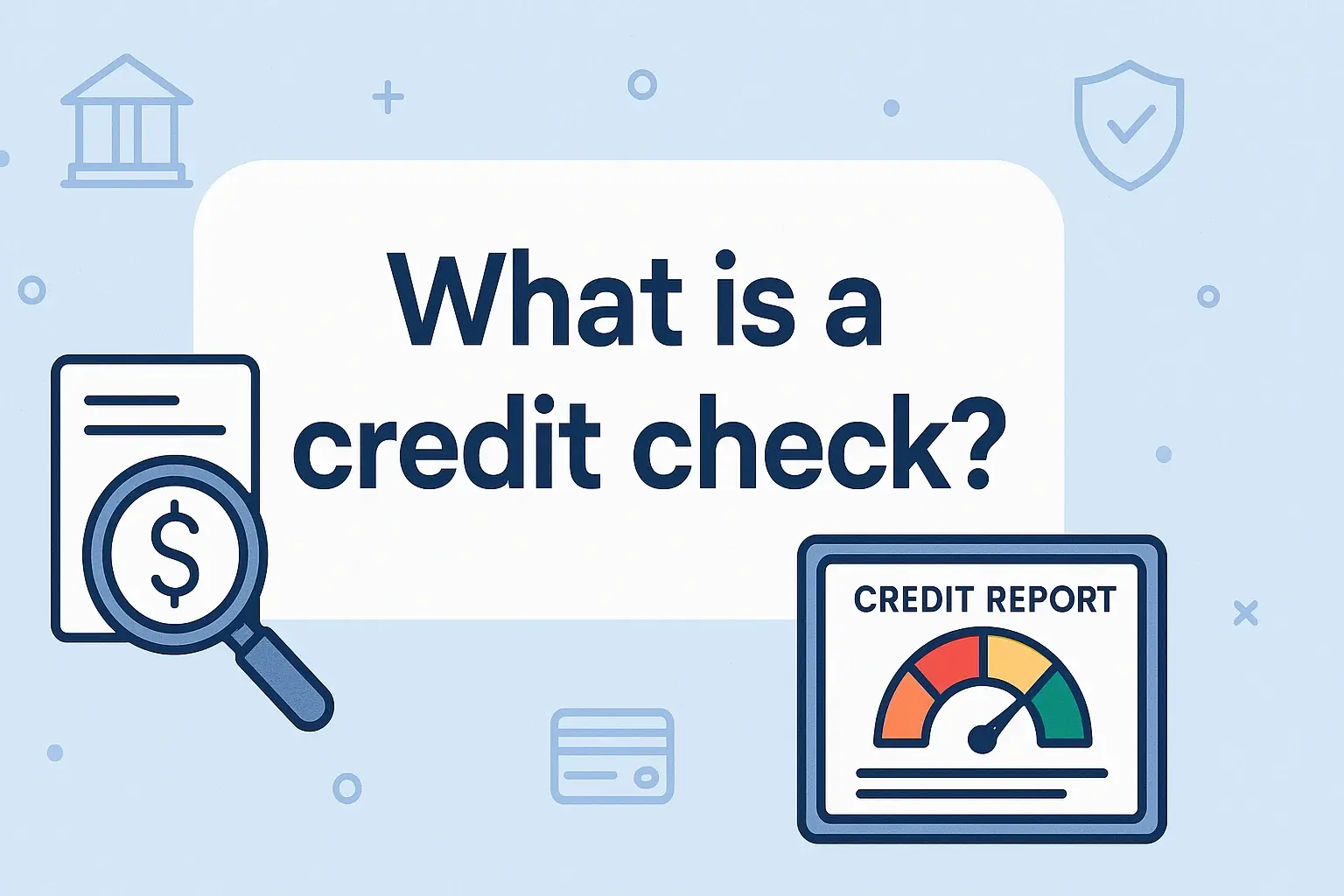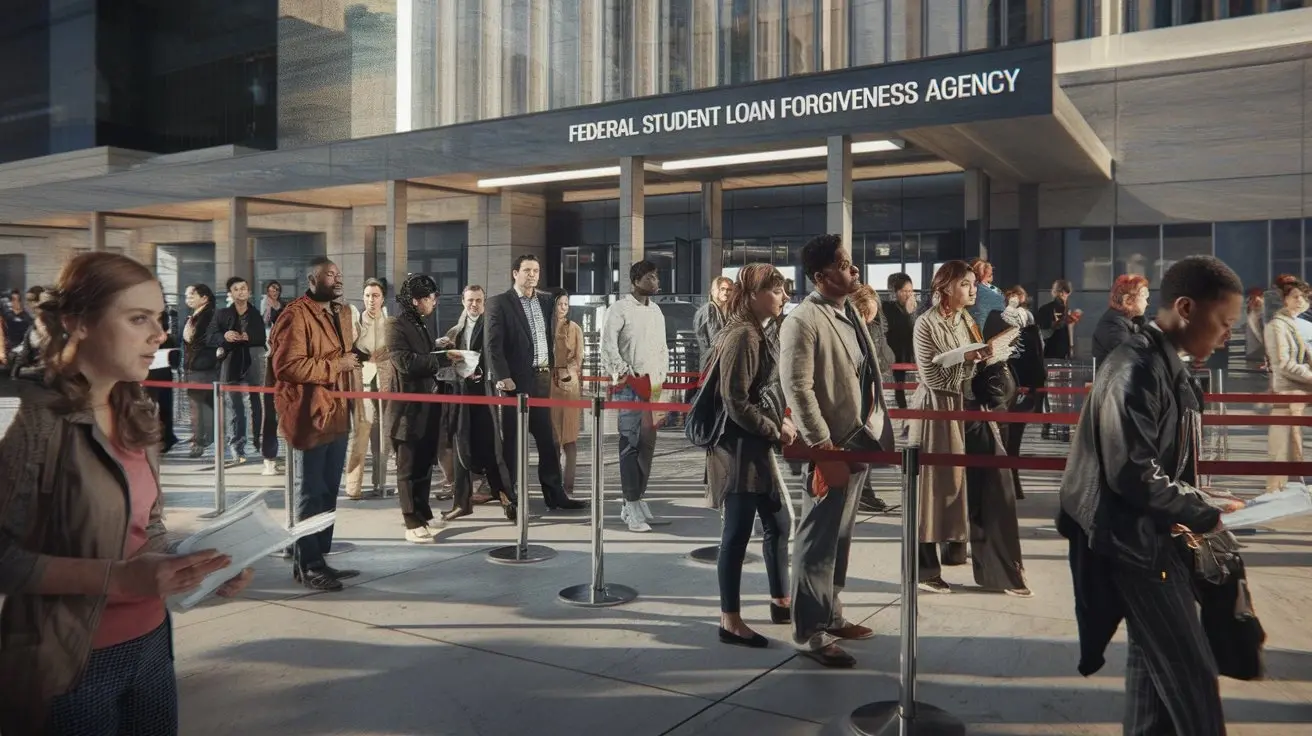-
Posted on: 21 Dec 2022

-
Unlock the secrets to a stellar credit score with our guide to the top 5 proven credit restoration strategies. Discover actionable steps and expert insights to repair your credit and achieve your financial goals in 2025.
Strategy 1: The Power of Credit Report Accuracy - Dispute Inaccuracies
Your credit report is the foundation of your credit score. Inaccurate information can significantly drag down your score, hindering your ability to secure loans, rent an apartment, or even get a job. In 2025, understanding how to meticulously review and dispute errors on your credit reports from Equifax, Experian, and TransUnion is more crucial than ever. This strategy focuses on empowering you to take control by identifying and rectifying any misinformation that might be impacting your financial reputation.
Why Credit Report Accuracy Matters
Credit reporting agencies are tasked with collecting and maintaining your credit history. While they strive for accuracy, human error, data breaches, or reporting mistakes can lead to inaccuracies. These can range from minor details like incorrect addresses to significant errors such as accounts that don't belong to you, incorrect payment statuses, or duplicate negative entries. The Fair Credit Reporting Act (FCRA) grants you the right to dispute any information on your credit report that you believe is inaccurate, incomplete, or unverifiable.
Common Credit Report Errors to Look For
- Incorrect Personal Information: Wrong name spellings, outdated addresses, or incorrect employment history.
- Accounts You Don't Recognize: Debts or credit accounts opened in your name that you never applied for, often a sign of identity theft.
- Incorrect Payment Status: Late payments marked when you paid on time, or accounts showing a balance that has already been paid off.
- Duplicate Negative Entries: The same negative item (e.g., a late payment) appearing multiple times on your report.
- Closed Accounts Still Showing Open: Accounts that have been legitimately closed but are incorrectly listed as active.
- Incorrect Credit Limits or Balances: Errors in the reported amount of credit available or the outstanding balance on an account.
- Public Records Errors: Mistakes in bankruptcy filings, liens, or judgments.
How to Obtain and Review Your Credit Reports
You are entitled to a free credit report from each of the three major credit bureaus (Equifax, Experian, and TransUnion) once every 12 months. The official source for these free reports is AnnualCreditReport.com. It's advisable to stagger your requests throughout the year, pulling one report every four months, to monitor your credit continuously.
When reviewing your reports, take your time. Print them out or use a digital tool to highlight any discrepancies. Compare them against your own records, such as cancelled checks, bank statements, and original loan agreements. Look for consistency and verify every piece of information.
The Dispute Process: A Step-by-Step Guide
Once you've identified an error, you need to initiate a dispute with the credit bureau that holds the inaccurate information. You can do this online, by mail, or by phone, though written disputes are often recommended for record-keeping.
Step 1: Gather Your Evidence
Before you dispute, collect all supporting documents. This might include:
- Copies of your credit report showing the error.
- Statements from the creditor confirming the error.
- Proof of payment if a payment was marked late incorrectly.
- Any other documentation that refutes the inaccurate information.
Step 2: Write a Dispute Letter
If disputing by mail, draft a clear and concise dispute letter. Include:
- Your full name, address, and Social Security number.
- The account number associated with the error.
- A clear explanation of the inaccuracy and why you believe it's wrong.
- A request for the bureau to investigate and remove the inaccurate information.
- Copies (not originals) of your supporting documentation.
- A stamped, self-addressed envelope if you want a response by mail.
Example Snippet for Dispute Letter: "I am writing to dispute the accuracy of the information listed for account number [Account Number] reported by [Creditor Name]. My credit report indicates a late payment on [Date], however, my records show payment was made on [Date] as evidenced by the attached bank statement. I request that this inaccurate late payment notation be removed from my credit report."
Step 3: Send Your Letter
Send your letter via certified mail with a return receipt requested. This provides proof that the credit bureau received your dispute. The credit bureaus have 30 days (or 45 days if you provide additional information during the 30-day period) to investigate your dispute and respond.
Step 4: Follow Up
If the credit bureau cannot verify the information or finds it to be inaccurate, they must correct or remove it. You will receive an updated credit report reflecting the changes. If the dispute is denied, you have the right to ask the credit bureau to review your dispute again, especially if you have new evidence. You can also file a complaint with the Consumer Financial Protection Bureau (CFPB).
Disputing Directly with the Creditor
In addition to disputing with the credit bureaus, you can also dispute directly with the creditor or furnisher of the information. This process is often faster and can resolve the issue at its source. The FCRA also grants you this right. You should send a similar dispute letter to the creditor, detailing the error and providing supporting documentation.
The Impact of Accurate Credit Reports
Successfully disputing inaccuracies can lead to a significant and immediate boost in your credit score. For instance, removing a collection account or a mistaken late payment can improve your score by tens or even hundreds of points. In 2025, with credit scores playing an even larger role in financial accessibility, maintaining accurate credit reports is a foundational step for anyone aiming to improve their financial standing.
Strategy 2: Debt Negotiation and Settlement - A Strategic Approach
High levels of debt, especially delinquent or charged-off accounts, are major detractors from your credit score. Strategy 2 focuses on proactively addressing these debts through negotiation and settlement. This approach can help reduce the total amount you owe, stop aggressive collection efforts, and prevent further damage to your credit report by resolving outstanding balances. It's a powerful tool for credit restoration when approached strategically.
Understanding Debt Negotiation and Settlement
Debt negotiation involves communicating with your creditors or collection agencies to arrange a new payment plan, lower interest rates, or reduce the principal balance. Debt settlement is a specific type of negotiation where you aim to pay a lump sum that is less than the full amount owed, in exchange for the creditor agreeing to consider the debt settled. This is typically done when you are struggling to make minimum payments or are facing significant financial hardship.
When is Debt Settlement a Viable Option?
Debt settlement is often considered when:
- You have significant unsecured debt (e.g., credit cards, personal loans) that you cannot realistically pay off in full.
- You are experiencing financial hardship, such as job loss, medical emergencies, or divorce.
- You have explored other options like debt consolidation or balance transfers and they are not feasible.
- You have the ability to save up a lump sum of money to offer as settlement.
It's important to note that debt settlement can have negative implications for your credit score, as it typically involves paying less than the full amount owed, which is usually reported as a "settled for less than full balance" or "paid in full for less than agreed." However, the alternative—defaulting or facing prolonged collections—can be even more damaging.
The Process of Negotiating Debt Settlements
Negotiating debt settlements can be done yourself or through a debt settlement company. While DIY negotiation saves on fees, it requires significant time, patience, and negotiation skills.
DIY Debt Negotiation Steps:
- Identify Your Debts: List all your debts, including the creditor, outstanding balance, interest rate, and minimum payment.
- Assess Your Financial Situation: Determine how much you can realistically afford to pay towards your debts each month. This will inform your settlement offers.
- Contact Creditors or Collection Agencies: Start by contacting the creditor directly if the account is still with them. If it's with a collection agency, contact them. Be polite but firm.
- Explain Your Hardship: Clearly and concisely explain your financial difficulties. Creditors are often more willing to negotiate if they believe you are making a genuine effort to resolve the debt.
- Make a Settlement Offer: Begin with a low offer, typically 20-30% of the outstanding balance, and be prepared to negotiate upwards. Have your lump sum ready or a clear plan for how you will acquire it.
- Get Everything in Writing: Crucially, before making any payment, obtain a written agreement from the creditor or collection agency that details the settlement amount, confirms the debt is settled, and states that they will not pursue you for the remaining balance. Ensure the agreement also specifies how the settlement will be reported to credit bureaus.
- Make the Payment: Once you have the written agreement, make the agreed-upon payment.
- Verify Reporting: After payment, request an updated credit report to ensure the debt is reported accurately as settled.
Working with a Debt Settlement Company:
Debt settlement companies can handle negotiations on your behalf. They typically advise you to stop making payments to creditors and instead deposit funds into an account they manage. Once a sufficient amount is saved, they will make a settlement offer.
Pros:
- Professional negotiators can often secure better deals.
- They handle the stressful communication with creditors.
- Can be beneficial if you lack the time or confidence for DIY negotiation.
Cons:
- Significant fees, often a percentage of the amount saved.
- Can take a long time, during which creditors may continue collection efforts, and your credit score will likely decline further.
- Risk of falling for scams; research companies thoroughly and look for accreditation and good reviews.
- The settlement itself will negatively impact your credit score.
Important Note for 2025: Be wary of companies that guarantee specific settlement percentages or promise to remove negative information that is accurate. Legitimate companies will explain the risks and potential credit score impact.
Comparison: Negotiating with Original Creditors vs. Collection Agencies
Feature Original Creditor Collection Agency Likelihood of Negotiation Moderate. They prefer full payment but may negotiate to avoid further costs. High. Their goal is to recoup some of the debt, often bought at a steep discount. Settlement Percentage Potential Generally higher percentage required (e.g., 50-80% of balance). Often lower percentage required (e.g., 20-50% of balance). Reporting Impact May report as "paid in full" or "settled for less than full balance." Often reports as "settled for less than full balance" or "paid collection." Customer Service Usually more established and professional. Can vary widely; some are aggressive. The Credit Score Impact of Debt Settlement
Settling a debt for less than the full amount will be reflected on your credit report. It's generally considered a negative mark, though less severe than a charge-off or bankruptcy. The impact is that the account will show as "settled for less than full balance" or similar. This notation will remain on your report for up to seven years from the date of the original delinquency. However, resolving a delinquent account through settlement can prevent further damage from ongoing collections and legal actions, and can be a strategic move to clear the slate for future credit building.
Alternatives to Debt Settlement
Before opting for debt settlement, consider these alternatives:
- Debt Management Plan (DMP): Offered by non-profit credit counseling agencies, a DMP consolidates your debts into a single monthly payment with potentially lower interest rates. It does not involve settling for less.
- Debt Consolidation Loan: Taking out a new loan to pay off multiple debts, leaving you with one monthly payment. The goal is usually to get a lower interest rate.
- Negotiating a Payment Plan: Arranging to pay the full amount owed over an extended period, possibly with reduced interest.
In 2025, with economic uncertainties, creditors may be more open to flexible payment plans than outright settlements. Always explore these options first.
Strategy 3: Building Positive Credit History - The Right Way
While removing negative items and settling debts are crucial for credit restoration, building a positive credit history is the long-term key to a strong credit score. This strategy focuses on establishing and maintaining responsible credit behavior. Without positive accounts, your credit report may be thin, which can also negatively impact your score. By demonstrating consistent, responsible credit use, you signal to lenders that you are a reliable borrower.
The Importance of a Positive Credit Mix and History
Credit scoring models, like FICO and VantageScore, consider several factors. Payment history (35%) and amounts owed (30%) are the most significant. However, credit history length (15%) and credit mix (10%) also play a role. A positive credit history demonstrates a track record of managing credit responsibly over time. A good credit mix includes different types of credit, such as revolving credit (credit cards) and installment loans (mortgages, auto loans, personal loans).
Methods for Building Positive Credit
1. Secured Credit Cards
Secured credit cards are an excellent tool for individuals with no credit history or a damaged one. You provide a cash deposit, which typically becomes your credit limit. This deposit mitigates the lender's risk, making it easier to get approved.
How they work:
- Apply for a secured card and deposit funds (e.g., $200-$500).
- Use the card for small, everyday purchases.
- Pay your bill in full and on time every month.
- The issuer reports your payment activity to the credit bureaus.
After 6-12 months of responsible use, many issuers will review your account and may convert it to an unsecured card, returning your deposit.
2. Credit-Builder Loans
These are small loans specifically designed to help individuals build or rebuild credit. The loan amount is typically held in a savings account by the lender and released to you after you've paid off the loan. Your payments are reported to the credit bureaus throughout the loan term.
How they work:
- You take out a credit-builder loan (e.g., $500-$1,000).
- The loan amount is placed in a locked savings account.
- You make monthly payments on the loan.
- Your on-time payments are reported to credit bureaus.
- Once the loan is fully repaid, you receive the funds from the savings account.
These are often available through credit unions and some community banks.
3. Authorized User Status
If you have a trusted friend or family member with excellent credit, they can add you as an authorized user on one of their credit cards. Their positive payment history on that account can then appear on your credit report, potentially boosting your score.
Important Considerations:
- Ensure the primary cardholder has a strong credit history and manages the account responsibly.
- The primary cardholder's negative activity can also affect your report.
- Some newer scoring models may give less weight to authorized user accounts.
4. Rent and Utility Reporting Services
Traditionally, rent and utility payments were not reported to credit bureaus. However, several services now allow you to report these on-time payments, turning your regular bills into credit-building opportunities.
- Rent Reporters: Services like RentReporters, LevelCredit, or Experian Boost allow you to report your rent payments. Some may require verification or a fee.
- Utility Reporters: Experian Boost also includes utility payments (electricity, gas, water, phone, streaming services). Other services might also exist.
Note for 2025: While these services can help, ensure they are reporting to all three major bureaus for maximum impact. Experian Boost is a good starting point as it's directly integrated with Experian.
Responsible Credit Management Practices
Once you start building positive credit, maintaining it is paramount. This involves adopting healthy financial habits:
- Pay Bills On Time, Every Time: This is the single most important factor for your credit score. Set up auto-pay or reminders.
- Keep Credit Utilization Low: Aim to use no more than 30% of your available credit on revolving accounts (credit cards). Lower is even better (under 10% is ideal).
- Avoid Opening Too Many Accounts at Once: Each application for credit results in a hard inquiry, which can slightly lower your score. Space out applications.
- Monitor Your Credit Reports Regularly: Continue to check your reports for accuracy and to track your progress.
- Don't Close Old, Unused Accounts (Unless Necessary): Older accounts contribute to your credit history length. Closing them can reduce your average account age and increase your credit utilization ratio.
Building Credit with a Thin File
If your credit report is "thin" (meaning you have very few accounts), lenders may see you as an unknown risk. The strategies above are designed to add positive, verifiable history to your file. For example, a secured card used responsibly for a year can transform a thin file into a more established one. In 2025, financial institutions are increasingly looking for consistent, positive data to assess risk, making this strategy vital.
Strategy 4: Understanding and Managing Credit Utilization
Credit utilization ratio (CUR) is a critical component of your credit score, second only to payment history. It measures how much of your available revolving credit you are using. A high utilization ratio signals to lenders that you might be overextended and at a higher risk of default. This strategy focuses on understanding what CUR is, how it impacts your score, and practical methods to keep it low.
What is Credit Utilization Ratio?
Your credit utilization ratio is calculated by dividing the total balance owed on your revolving credit accounts (like credit cards) by the total credit limit across all those accounts. It is usually expressed as a percentage.
Formula:
CUR = (Total Revolving Balances / Total Revolving Credit Limit) * 100Example:
You have two credit cards:
- Card A: Balance $500, Credit Limit $2,000
- Card B: Balance $1,000, Credit Limit $4,000
Total Balance = $500 + $1,000 = $1,500
Total Credit Limit = $2,000 + $4,000 = $6,000
CUR = ($1,500 / $6,000) * 100 = 25%
How Credit Utilization Affects Your Score
Credit utilization accounts for approximately 30% of your FICO score and a similar percentage of VantageScore.
- High Utilization (above 30%): Can significantly lower your credit score. Lenders see this as a sign of financial distress or over-reliance on credit.
- Moderate Utilization (10% - 30%): Generally considered acceptable, but not optimal.
- Low Utilization (below 10%): Ideal for maximizing your credit score.
- Zero Utilization: While seemingly good, having a CUR of 0% on all cards might not be as beneficial as a very low utilization. Scoring models like to see that you can manage credit responsibly, which includes using a small portion of it.
It's important to note that credit card companies typically report your balance to credit bureaus once a month, usually on your statement closing date. Your score is influenced by the balance reported on that specific date, not necessarily your current balance. This means even if you pay off your card before the due date, a high balance reported on the statement closing date can negatively impact your score until the next reporting cycle.
Strategies to Lower and Manage Credit Utilization
1. Pay Down Balances Aggressively
The most direct way to lower your CUR is to reduce the total amount you owe on your revolving credit accounts. Prioritize paying down balances on cards with the highest utilization first, or focus on cards with the highest interest rates to save money in the long run.
2. Increase Your Credit Limits
If your spending habits remain consistent, increasing your credit limits will automatically lower your CUR. Contact your credit card issuers and request a credit limit increase. This often involves a "hard pull" on your credit report, but some issuers offer "soft pull" increases that don't affect your score.
Example: If your total credit limit is $6,000 and your balance is $1,500 (25% CUR), and you get a credit limit increase to $10,000, your CUR drops to 15% ($1,500 / $10,000) without changing your balance.
3. Make Multiple Payments Per Month
To combat the impact of the statement closing date, consider making payments more frequently than once a month. You can make a payment before your statement closing date to reduce the balance that gets reported. For example, if your statement closes on the 15th, you could make a payment on the 1st and another on the 10th to keep the reported balance low.
4. Use Different Credit Cards for Different Purchases
If you have multiple credit cards, try to distribute your spending across them rather than maxing out one card. This helps keep the utilization on individual cards lower, which can be beneficial as some scoring models consider individual card utilization.
5. Consider a Balance Transfer (with Caution)
If you have high balances on several cards, a balance transfer to a card with a 0% introductory APR can help you pay down debt faster without accruing interest. This can free up cash flow to make larger principal payments, thereby lowering your overall utilization. However, be mindful of balance transfer fees and the APR after the introductory period ends. Ensure you have a plan to pay off the balance before the promotional period expires.
6. Avoid Closing Unused Credit Cards
As mentioned in Strategy 3, closing old, unused credit cards can reduce your total available credit. This can increase your CUR, even if your balances remain the same. For example, if you close a card with a $5,000 limit, your total available credit decreases, and your CUR goes up.
Credit Utilization Benchmarks for 2025
While the general advice is to keep utilization below 30%, aiming for lower is always better for maximizing your score. Here's a general guideline:
- Excellent: Under 10%
- Very Good: 10% - 20%
- Good: 20% - 30%
- Fair: 30% - 50%
- Poor: Over 50%
In 2025, with lenders becoming more sophisticated in their risk assessments, maintaining a CUR below 10% is increasingly seen as a hallmark of excellent credit management. It demonstrates that you have access to significant credit but use only a small fraction, signaling financial stability and responsibility.
Strategy 5: Seeking Professional Credit Counseling Services
When credit restoration efforts become overwhelming, or when dealing with complex debt situations, professional credit counseling services can provide invaluable guidance and support. These services offer expert advice, debt management plans, and educational resources to help individuals navigate their financial challenges and rebuild their creditworthiness. This strategy is about leveraging expert knowledge when you need it most.
When to Consider Professional Credit Counseling
You might benefit from credit counseling if you are:
- Struggling to make minimum payments on multiple debts.
- Facing overwhelming debt and don't know where to start.
- Experiencing financial hardship due to job loss, medical bills, or other emergencies.
- Receiving frequent calls from creditors or collection agencies.
- Unsure about the best strategies for debt management and credit repair.
- Looking for a structured plan to get out of debt and improve your credit score.
Types of Credit Counseling Services
There are several types of services available, each with different approaches:
1. Non-Profit Credit Counseling Agencies
These agencies, often affiliated with the National Foundation for Credit Counseling (NFCC) or the Association of Financial Counseling and Planning Education (AFCPE), offer a range of services:
- Budgeting and Financial Education: Helping you create a realistic budget and understand personal finance principles.
- Debt Management Plans (DMPs): This is a common service. Counselors negotiate with your creditors to potentially lower interest rates, waive late fees, and establish a single, affordable monthly payment. You make one payment to the agency, which then distributes it to your creditors.
- Credit Counseling Sessions: One-on-one sessions to assess your financial situation and develop a personalized plan.
Key Features of DMPs:
- Single Payment: Simplifies bill paying.
- Reduced Interest Rates: Can significantly lower the cost of debt.
- Waived Fees: Late fees and over-limit fees may be waived.
- Credit Reporting: Accounts included in a DMP are typically reported as being paid through the plan, which can be seen positively by some lenders, though it may initially impact your score.
- No Debt Forgiveness: You still repay the full amount owed, just over a longer period and with reduced interest.
2. Debt Settlement Companies
These companies negotiate with creditors to settle your debts for less than the full amount owed. While they can reduce the total amount you pay, they charge significant fees and the process can be detrimental to your credit score, as settling for less is a negative mark. It's crucial to distinguish these from non-profit credit counseling agencies.
Warning: Be extremely cautious of debt settlement companies. Research them thoroughly, check for accreditation, and understand their fee structure and the potential credit score implications. Many of these companies are not regulated and can be scams.
3. Financial Advisors
While financial advisors can offer comprehensive financial planning, their primary focus is often on investment and wealth management. They may offer debt advice, but it's not their core specialization. For specific credit restoration and debt management, credit counselors are typically more specialized and cost-effective.
Choosing a Reputable Credit Counseling Agency
When selecting a credit counseling agency, especially in 2025, prioritize those that are:
- Non-Profit: Look for agencies accredited by organizations like the NFCC or AFCPE.
- Transparent: They should clearly explain their services, fees (if any), and the potential impact on your credit.
- Educational: They should offer resources and education to help you manage your finances long-term.
- Not High-Pressure: Avoid agencies that pressure you into specific plans or guarantee unrealistic outcomes.
- Complaint-Free: Check for complaints with the Better Business Bureau (BBB) and your state's consumer protection agency.
How Credit Counseling Contributes to Credit Restoration
Professional credit counseling contributes to credit restoration in several ways:
- Reduces Debt Burden: By consolidating payments and potentially lowering interest rates, it makes debt more manageable, allowing you to make consistent payments.
- Prevents Further Damage: A DMP can stop collection calls and prevent accounts from going into default or being charged off.
- Builds Positive Payment History: Making on-time payments through a DMP demonstrates responsible behavior to credit bureaus.
- Provides Financial Education: Equips you with the knowledge and skills to avoid future debt problems and manage your credit effectively.
- Offers a Structured Path: For those feeling lost, a DMP provides a clear, step-by-step plan to achieve financial stability.
While a DMP itself might be reported on your credit report, the consistent, on-time payments made through the plan over time can help rebuild a positive credit history, which is essential for long-term credit health.
In conclusion, credit restoration is a multifaceted process that requires a strategic, informed approach. By implementing these five proven strategies—accurately disputing errors, negotiating debts, building positive credit history, managing credit utilization, and seeking professional guidance when needed—you can systematically improve your credit score and achieve your financial goals. Start today by taking the first step towards a healthier financial future.
Faq
How long does it typically take to restore credit?
The timeline for credit restoration varies significantly. Minor errors can be corrected within 30-60 days, leading to a quick score boost. For more significant issues like collections or bankruptcies, it can take several months to a year or more to see substantial improvements. Consistent positive behavior over time is key.
Can I remove accurate negative information from my credit report?
No, accurate negative information, such as late payments or defaults, generally cannot be removed from your credit report until it naturally ages off (typically after seven years). However, you can dispute inaccuracies related to these items, and if proven false, they will be removed.
What is the difference between a credit score and a credit report?
Your credit report is a detailed history of your borrowing and repayment activities. Your credit score is a three-digit number calculated from the information in your credit report, summarizing your creditworthiness. A clean credit report leads to a higher credit score.
Are there specific credit score ranges for different financial goals in 2025?
Yes, generally:
- Excellent Credit (750+): Best interest rates, top-tier rewards.
- Very Good Credit (700-749): Good rates, wide range of loan options.
- Good Credit (650-699): Access to credit, but rates may be higher.
- Fair Credit (600-649): Limited options, higher rates, may require co-signer.
- Poor Credit (Below 600): Difficult to get approved for credit, very high rates.
Should I pay off old debts that are past the statute of limitations?
This is a complex decision. While you cannot be sued for a debt past its statute of limitations, paying it might restart the clock for reporting on your credit report, or a new collection agency might buy it and attempt to collect. Generally, it's advisable to consult with a consumer protection attorney or a reputable credit counselor before paying such debts.
How do credit monitoring services help with credit restoration?
Credit monitoring services track changes to your credit reports and scores across the major bureaus. They can alert you to new inquiries, accounts, or negative information, allowing you to act quickly to dispute errors or address issues, making them a valuable tool for ongoing credit health.










